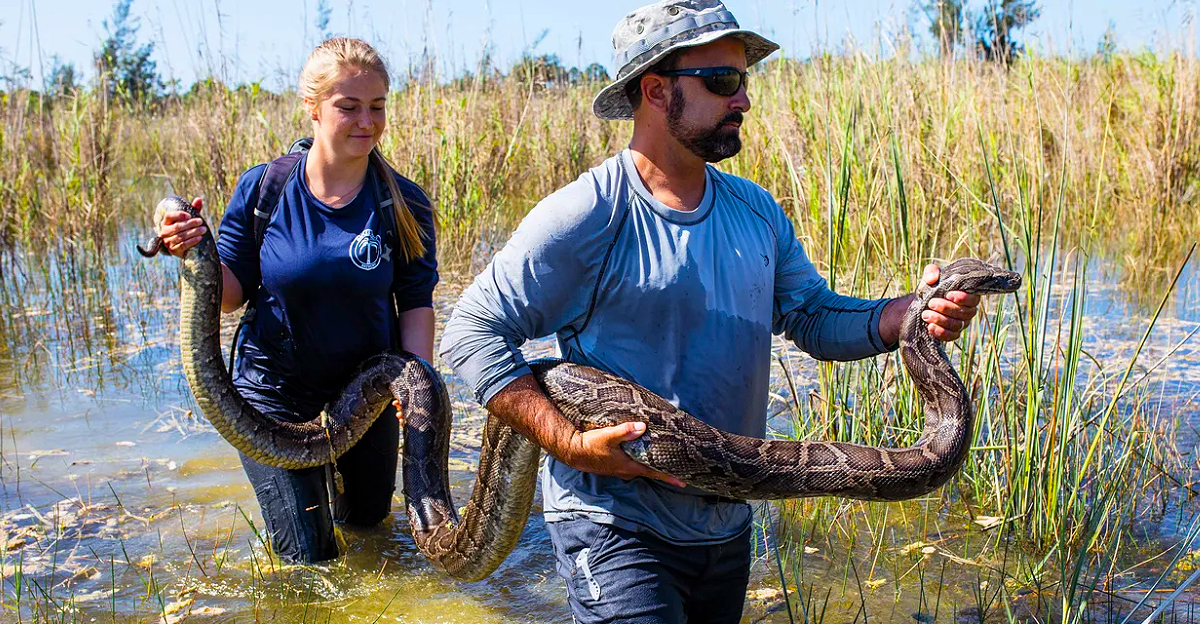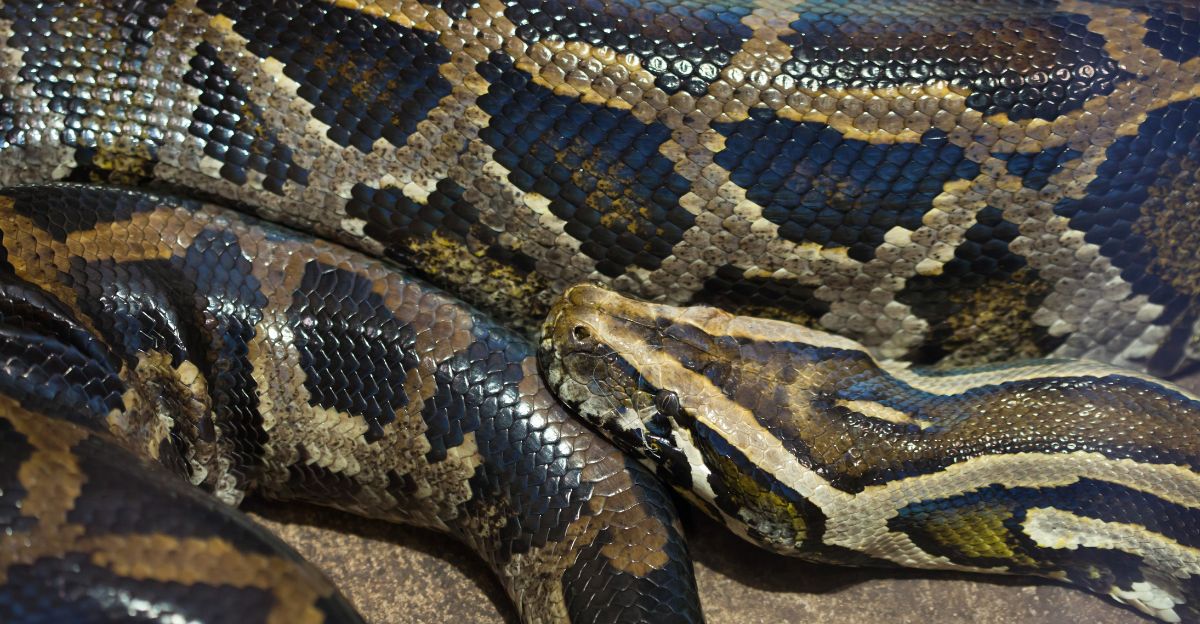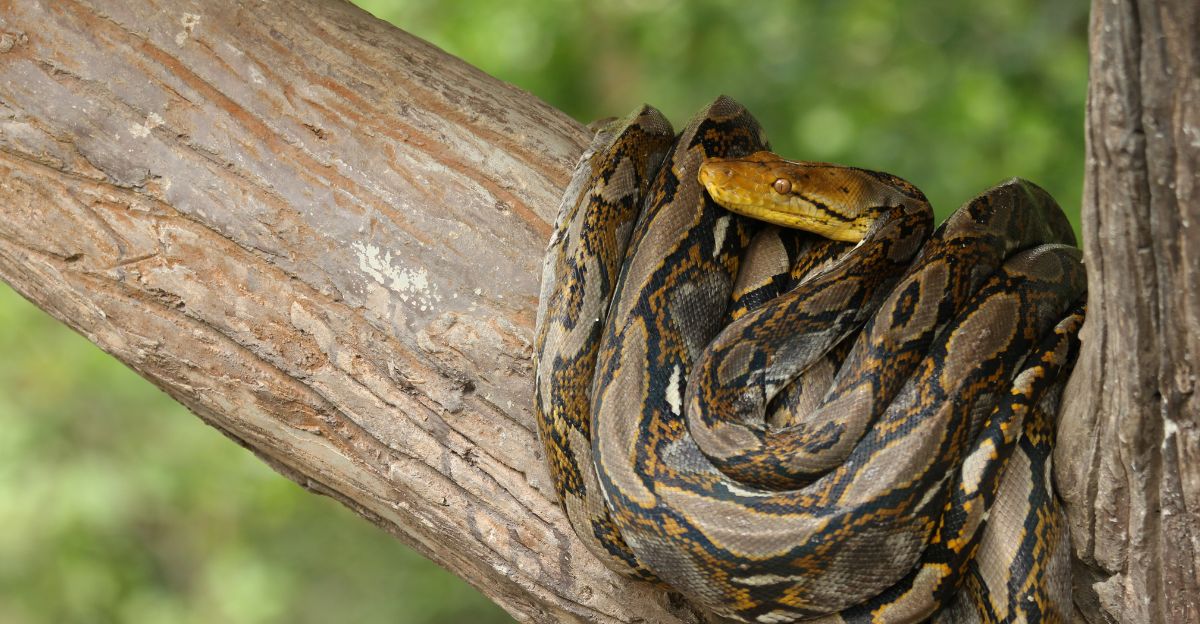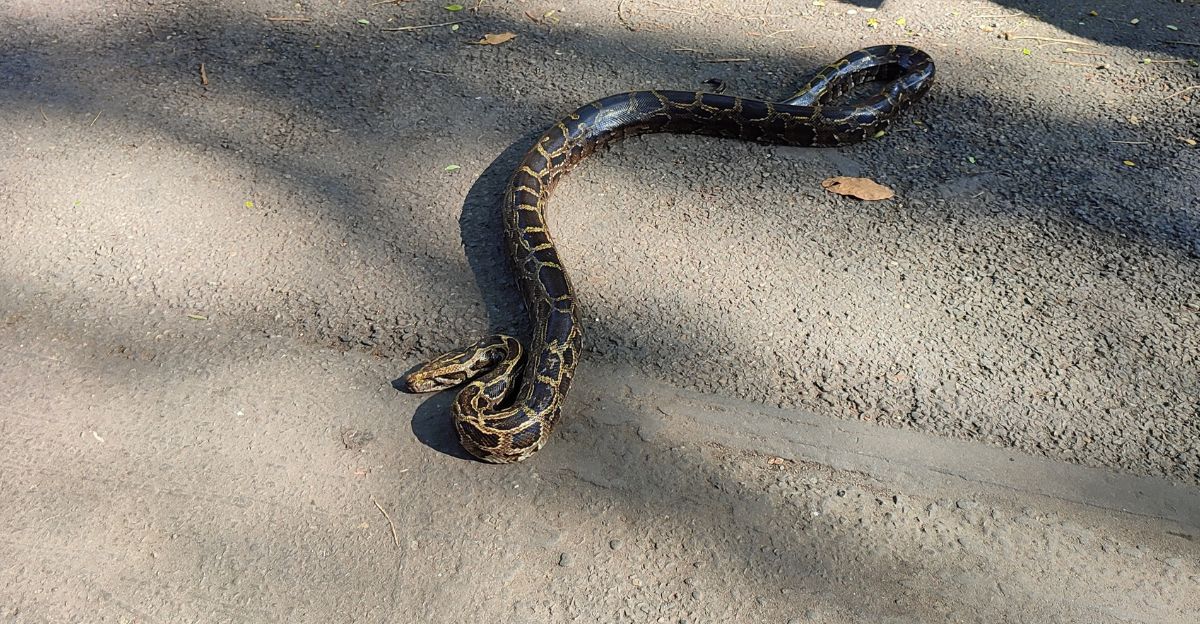
Everglades National Park, Florida’s vast wetland reserve covering over 1.5 million acres, is in an ecological crisis. Home to rare species, including the Florida panther and the Caribbean manatee, the park’s delicate balance is under threat from an unexpected invader: the Burmese python.
These massive reptiles, introduced through a combination of abandonment and, bizarrely, being flushed down toilets, have disrupted the ecosystem. The scale of the crisis is staggering, with native plant and animal life under the relentless predation of a species with no natural enemies in this environment.
The Toilet-Crawling Python Invasion

The Burmese python’s rise from discarded pet to ecological menace is a story that has stunned both scientists and officials alike. What’s at stake? According to a major report published by the U.S. Geological Survey, the python population in Florida has exponentially multiplied in just two decades, spreading from just a handful of snakes located at the southern tip of Everglades National Park to a full-scale invasion across the southern third of the state.
As reported by WLRN, these snakes are virtually impossible to detect in the wild and reproduce at alarmingly high rates, rendering them “one of the most intractable invasive-species management issues across the globe.”
Their presence is largely blamed on negligent pet owners who released or even flushed these exotic reptiles, allowing them to thrive in an environment with abundant prey and no natural predators.
Anatomy of an Apex Invader

Burmese pythons are formidable creatures. Native to Southeast Asia, they can grow as long as 23 feet and weigh up to 200 pounds. With a life span of 20-25 years, these carnivores possess powerful jaws and sharp teeth, making them top-tier predators. While not venomous, their bites are excruciating and bloody.
Their size and stealth allow them to ambush prey, including rabbits, deer, and even alligators. In the Everglades, their unchecked presence has proven catastrophic for native wildlife, which has no natural defense against such a predator.
Disappearing Wildlife: The Cost to the Ecosystem

The impact of the Burmese python invasion is devastating. Native species—some already endangered—have seen their numbers decimated. The snakes’ ravenous appetite means fewer birds, mammals, and reptiles survive to maintain the ecosystem’s balance.
The Everglades’ unique biodiversity is in danger, including the decimation of entire animal populations dominated by pythons like raccoons, opossums, and rabbits in areas the snakes invade. The effects extend outward, potentially upending the food web and the long-term health of this vital wetland.
Florida’s Unconventional Solution: Cash for Snakes

Desperate to quell the influx, Florida’s authorities have turned to an unusual solution: paying people to go out and kill snakes. Professional and amateur snake catchers alike are all paid $175 for each python captured and are each eligible for a bonus if they clear nests containing eggs.
The state’s annual Python Challenge raises the stakes, offering a $10,000 prize to the hunter who brings in the most snakes. This bounty system has created a new breed of conservationist, one armed with flashlights, hooks, and a determination to take back the Everglades, one python at a time.
The Python Challenge: A Deadliest Competition

Every year, Florida’s Python Challenge attracts hundreds of participants, all hoping to win the grand prize of $10,000. As much a spectacle as a conservation effort, the event gets people involved in the crisis in a direct way and brings the state together to challenge citizens into action.
Snake hunters like Donna Kalil, who has personally captured more than 700 pythons, are hailed as heroes. As far as the fanfare and cash prizes, the scale of the problem remains daunting, with just about 12,000 snakes eliminated in two decades, a drop in the bucket compared with the number estimated to be lurking in their midst.
The Hunters’ Challenge: Necessary But Controversial

For many hunters, the task is bittersweet. Donna Kalil, a prominent figure in the python removal effort, admits that she doesn’t like to kill the snakes. But the need is evident: Without intervention, the Everglades’ ecosystem could perish.
The ethical debate is complex, balancing animal welfare against environmental survival. Each hunt is a race against time, with hunters navigating treacherous terrain and facing the physical dangers posed by these massive reptiles, all for the hope of restoring balance to the park.
Tracking the Enemy

Biologists and scientists have entered the battle, acknowledging the limitations of brute force. Teams now track and monitor python movements using GPS and radio transmitters, hoping to uncover patterns that make the snakes easier to find and remove.
This cutting-edge scientific approacch is designed to outsmart the pythons, which are nearly invisible amid the Everglades’ dense vegetation, thanks to their camouflage and stealth. The collaboration between hunters and scientists is crucial, as each new discovery brings the state a little closer to managing the invasion.
A New Threat or an Unlikely Ally? The Tegu Lizard

As if the python crisis weren’t enough, another invasive species has entered the fray: the Tegu, a South American lizard known for eating the eggs of birds and reptiles. Some have speculated that Tegus could possibly do their part in controlling the python population by preying on their eggs.
However, the solution is risky. Introducing another predator into the mix could in turn cause its own host of new ecological problems, potentially compounding the damage. The Everglades faces a dangerous balancing act, where every intervention carries unpredictable consequences.
The Future of the Everglades: Hope or Defeat?

Despite years of effort, the Burmese python remains a dominant force in the Everglades. The combination of bounties, public challenges, and scientific research has slowed but not stopped their spread.
The park’s future hangs in the balance, dependent on innovative solutions and sustained public engagement. The story of the python invasion is a cautionary tale about the unintended consequences of exotic pet ownership and the resilience of nature, both its fragility and its capacity for the unexpected adaptation.







